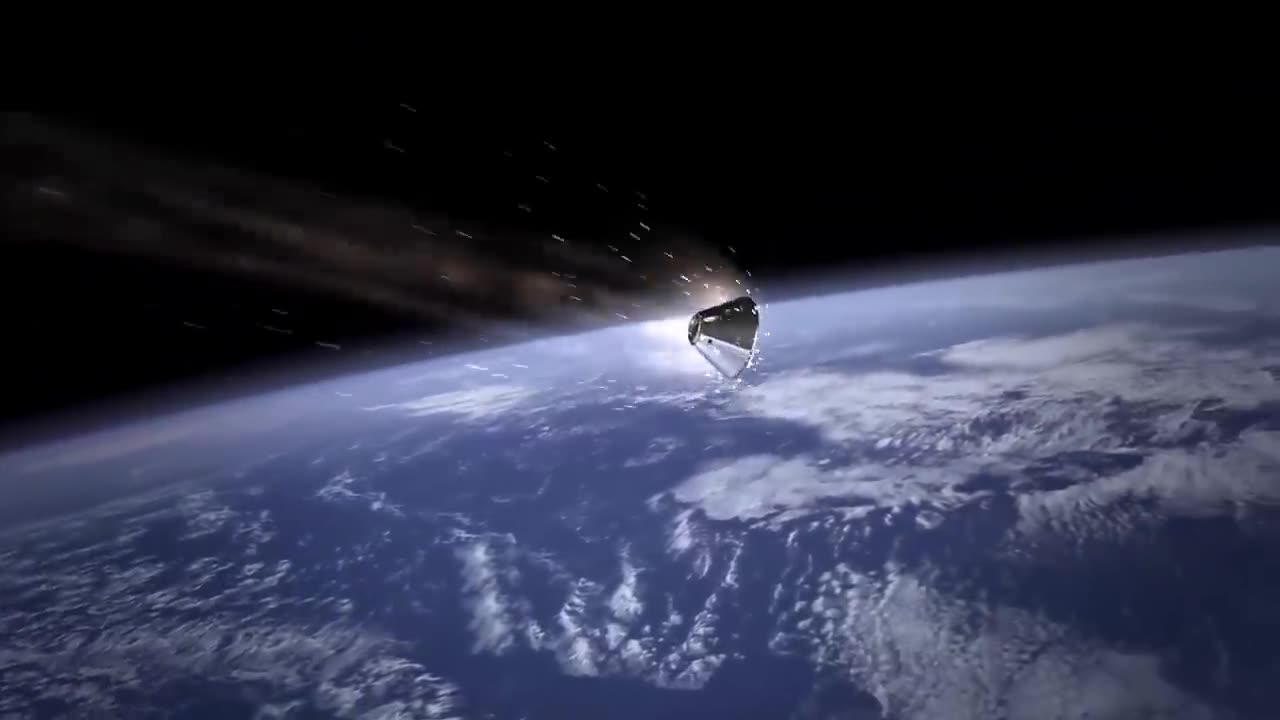Premium Only Content

How Do Spacecraft Slow Down? We Asked a NASA Technologist//dxbduba1
Spacecraft slow down in space by using various methods and propulsion systems, depending on their mission objectives and the specific phase of their journey. I'll outline some of the common methods:
Rocket Engine Firing: This is the most straightforward way to slow down a spacecraft. By firing its rocket engines in the opposite direction of its velocity, a spacecraft can decrease its speed. The principle is based on Newton's third law of motion: for every action, there is an equal and opposite reaction. The expelled exhaust gas from the rocket engines provides the thrust needed to slow down the spacecraft.
Aerobraking: For missions that involve entering a planet's or moon's atmosphere, aerobraking is used. The spacecraft dips into the atmosphere at a specific angle, using the planet's atmosphere to slow it down. The friction between the spacecraft and the atmosphere generates drag, reducing the spacecraft's speed.
Gravity Assists: In some cases, spacecraft can use the gravity of a celestial body to change their trajectory and speed. By performing a gravity assist maneuver, a spacecraft can gain or lose velocity, depending on the direction of the gravity assist. This technique is often used to save fuel or increase a spacecraft's speed.
Ion Propulsion: Ion propulsion systems are more efficient than traditional chemical rocket engines and are often used for deep-space missions. These engines continuously expel ions at high speeds, creating thrust and gradually slowing down the spacecraft.
Tethers: Electrodynamic tethers can be deployed in space to interact with a planet's magnetic field. By generating an electrical current through the tether, the spacecraft can create magnetic forces that act as a brake, slowing it down.
Orbital Mechanics: Spacecraft can use precise orbital mechanics to alter their speed and trajectory. For example, by changing their orbit's shape or inclination, they can adjust their speed relative to a target body.
Ballooning: In the case of missions involving atmospheres with extremely low densities, such as Venus, some spacecraft have used inflatable balloons or aerodynamic devices to slow down and navigate.
The specific method chosen depends on the spacecraft's design, its mission profile, and the celestial body it is targeting. NASA and other space agencies carefully plan and execute these maneuvers to achieve their mission objectives while conserving fuel and energy whenever possible.
-
 LIVE
LIVE
Side Scrollers Podcast
3 hours agoAngry Joe’s TDS/Halo Meltdown + Console War is OVER + Twitch Staff FIRED + More | Side Scrollers
734 watching -
 LIVE
LIVE
The Shannon Joy Show
2 hours agoThe Persecution Of Reiner Fuellmich - The World’s Original COVID Whistleblower! With Human Rights Advocate Seba Terribilini
236 watching -
 1:25:13
1:25:13
The Mel K Show
2 hours agoMORNINGS WITH MEL K -Declass Tidal Wave: The Unstoppable March Towards Justice - 10-29-25
17.5K7 -
 1:01:54
1:01:54
Grant Stinchfield
2 hours agoGAVIN NEWSOM FOR PRESIDENT?! AMERICA’S NEXT DISASTER IN WAITING!
16.7K7 -
 LIVE
LIVE
LFA TV
16 hours agoLIVE & BREAKING NEWS! | WEDNESDAY 10/29/25
2,609 watching -
 15:52
15:52
Professor Nez
2 hours agoTHIS is REALLY BAD for Democrats! NEW Epstein Bombshell JUST DROPPED!
14.5K4 -
 2:23:57
2:23:57
LadyDesireeMusic
3 hours ago $1.81 earnedPiano & Convo Geek Culture Classics and More Rumble Rants Grant Live Requests
22.2K2 -
 LIVE
LIVE
Viss
4 hours ago🔴LIVE - Viss & Dr Disrespect Dominate Duos In Battlefield RedSec!
114 watching -
 1:01:44
1:01:44
VINCE
5 hours agoGov't Shutdown Is Blowing Up In Dems' Faces | Episode 157 - 10/29/25
182K131 -
 LIVE
LIVE
SOLTEKGG
3 hours ago🔴LIVE - WINNING ONLY BATTLEROYALE - BF6 Giveaway
63 watching